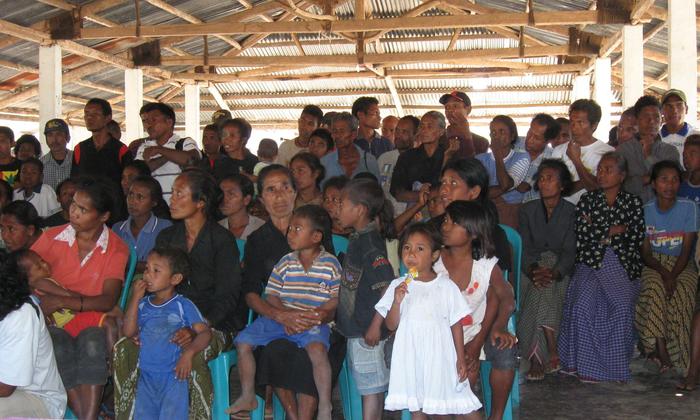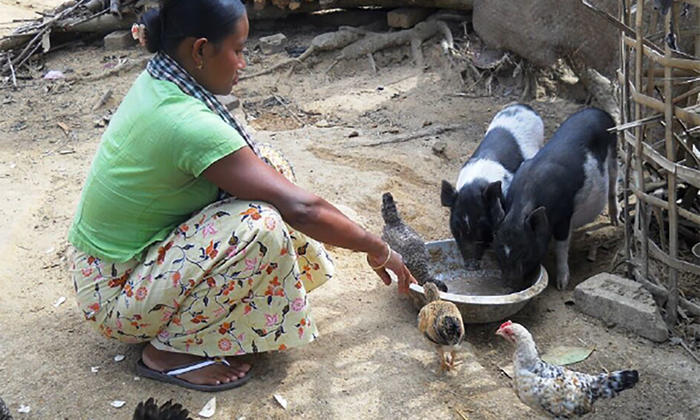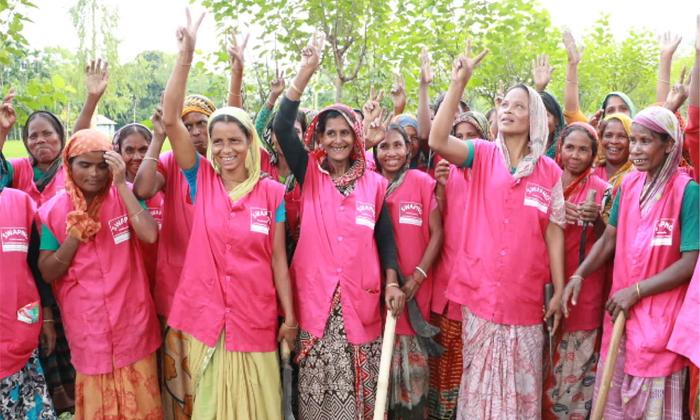Case study
Peru: Economic Inclusion and Sustainable Development of Andean Grain Producers in Ayacucho and Puno

SDGs ADDRESSED
This case study is based on lessons from the joint programme, “Economic inclusion and sustainable development of Andean grain producers in Ayacucho and Puno.”
Read more
Chapters
Project Partners
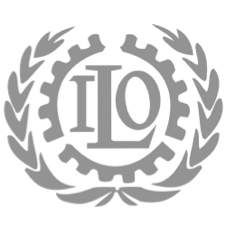
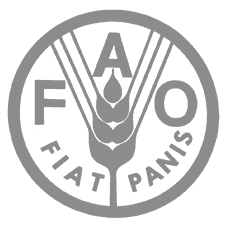
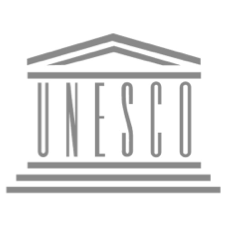
1. SUMMARY
The programme promoted inclusive economic growth, focusing on quinoa production in Ayacucho and Puno, in the Andean region, in Peru. With its reputation and popularity as a “superfood,” there has been rapid growth in demand for quinoa from international markets in recent years. Despite the boom in exports, at the local level, many small-holder producers still struggle to make a living and are unable to escape poverty. The programme sought to deliver an inclusive approach to quinoa value chain development to improve the incomes and livelihoods of local quinoa producers.
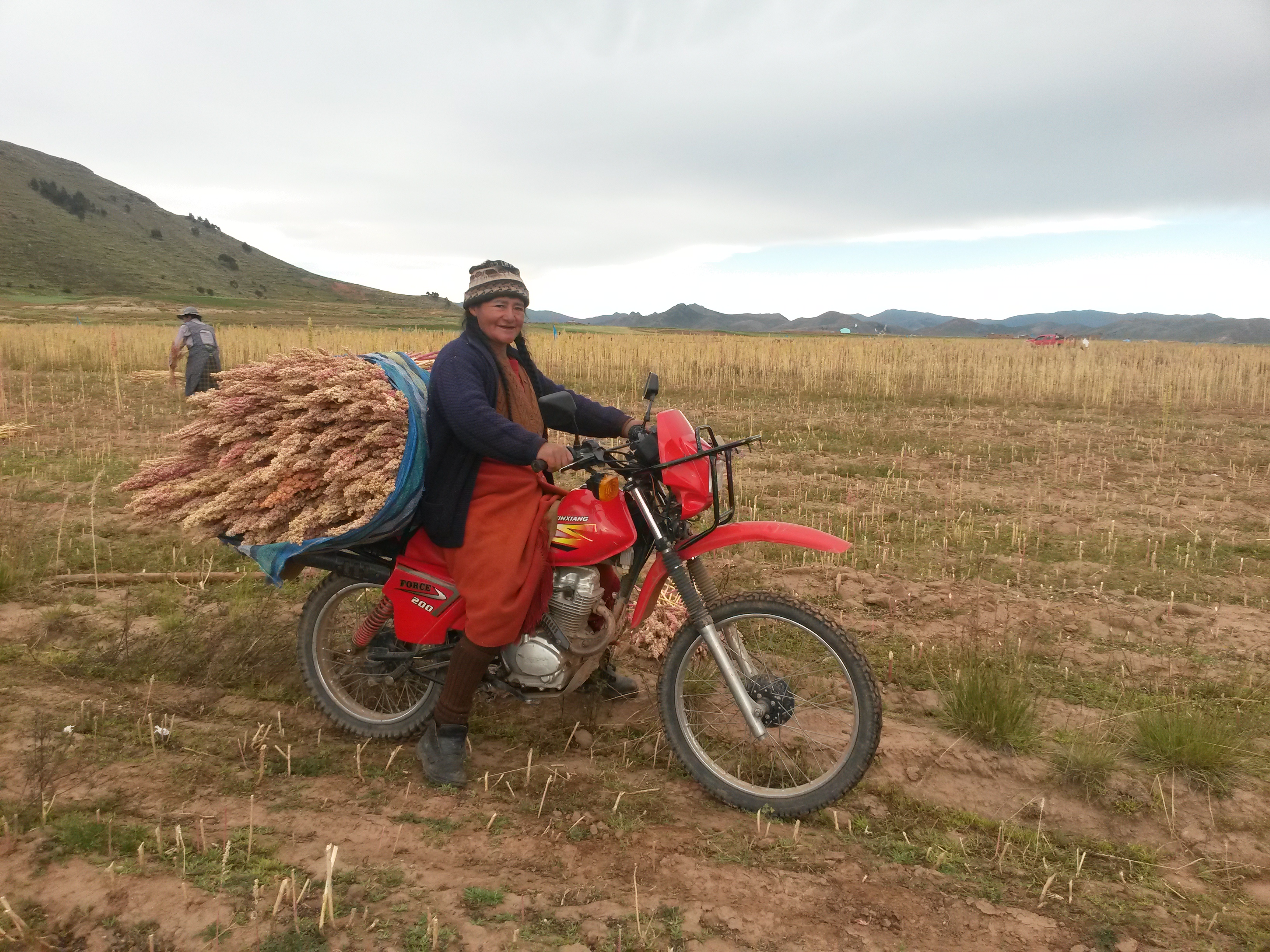
A quinoa producer transporting her crops by motorbike
2. SITUATION
Peru has seen strong GDP growth over the last 15 years, averaging 5.4% a year. However, 7 million Peruvians, including indigenous groups, women, youth and the elderly living in the Andes and its surrounding foothills known as “La Sierra” still suffer social and economic exclusion. Although Ayacucho and Puno, together, comprise 78% of the country’s quinoa production, and 30% of global production, the incidence of poverty is high, at 52.9%, compared to the national average of 23.9%. While the export of quinoa and other indigenous Andean Grains has increased exponentially, smallholder quinoa producers have seen little change in their lot.
3. STRATEGY
The programme was closely aligned with national development strategies and focused on smallholder producers of quinoa. A value chain approach was used to improve efficiencies, together with a focus on increasing the uptake of organic production, reducing post-harvest losses, and promoting gender equality and cultural heritage. Emphasis was placed on public-private partnerships, knowledge management, and good practices to promote sustainable development in the quinoa sector.

A local quinua producer
4. RESULTS AND IMPACT
In total, 3,366 quinoa producers benefited from training and technical assistance in various different areas, such as the cooperative business model, occupational safety and health, cleaner production techniques, and organic production and certification. In Puno, an increase in collective sales was achieved along with an improvement in prices of 22%; in Ayacucho, incomes increased by 47% from 2016 to 2017. Quality and traceability were improved along with the strategic positioning and branding of quinoa produced in Puno through the registration of the collective organic trademark “Aynok´a—Ancestral Highland Quinoa” in 2016 and in Ayacucho, through the implementation of an inclusive business model.
Focusing on access to improved seeds, 49 producers (59% women) in Puno were trained in seed production, and 12 successfully registered as certified seed producers. This group produced some 15,700 kilograms of seeds, of which 36% were certified by the National Institute of Agrarian Innovation (INIA) – Peru. In Ayacucho, 159 farmers (23% women) were trained and four achieved certified seed producer status, producing 7,500 kilograms of “authorized” seeds as per INIA’s classification system.
In addition to improving productive capacities, the programme raised awareness about gender equality, prevention of alcoholism and domestic violence, and provided training on leadership, negotiation and interpersonal skills. Through awareness raising, the visibility of quinoa as part of the Andean cultural heritage was promoted. A 2017 study on Andean Grains in Peru, “Hupa Quinua: Sacred Seed, Ancestral Food,” put the spotlight on the historical, ecological and ethnographic dimensions of quinoa in the Andean region, from pre-Hispanic times to the present. It also highlighted the role of women and ancestral cultivation practices.

5. CHALLENGES
With high levels of poverty and reliance on rain-fed agriculture as their way of life, quinoa producers face many challenges, including severe droughts and frost, and limited access to land and financing. The need for immediate sales due to cash flow constraints can often result in volatility and large falls in market prices due to oversupply, exacerbating the situation.
Due to high interest rates, widespread distrust in the traditional banking system and the administrative hurdles in accessing schemes offered by export companies, financial inclusion was low among producers. In the first instance, the programme promoted financial literacy together with the Swisscontact Foundation, including the importance of savings, investment, repayment of loans, and sustainable business practices. Access to finance was achieved through Credit and Savings Unions (Uniones de Crédito y Ahorro) model, with support from the national development bank, COFIDE (Banco de Desarrollo del Perú) and further training provided in bookkeeping and basic accounting principles, etc.
6. LESSONS LEARNED
- With the varied resources and capacities of producers, profiling is important to understanding and differentiating between the needs of different groups of farmers and to better tailor interventions to their needs.
- Organic certification makes rigorous requirements of producers, end to-end, which many among the targeted population, found challenging to meet, due to their difficult circumstances. By programme closure, however, 214 of the 500 farmers participating in the organic certification programme achieved yields 12-13% higher than the baseline scenario. Those who participated in the programme’s two campaigns were most successful.
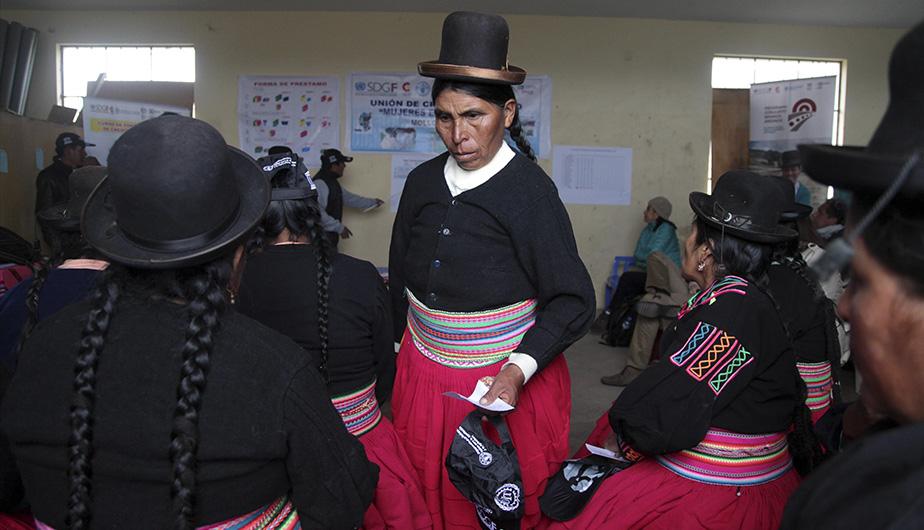
Mamachas from Peru
7. SUSTAINABILITY AND POTENTIAL FOR REPLICATION
At an institutional level, the programme successfully engaged partners from public and private sectors, as well as NGOs and representatives from producer organizations, in all programmatic activities, including in technical roundtables. An analysis of gender gaps in the quinoa value chain in Ayacucho and Puno was conducted to inform programme activities and regional plans were developed to improve competitiveness and sustainability. A lot of headway was made in fostering an enabling environment to promote organic production. A manual was developed for use in Farmer Field Schools and 93 facilitators were trained in its methods. Two technical standards were developed for the production of organic fertilizers, also helping lay the groundwork for future interventions.
The programme built local capacities and achieved scale through the “Training-of-Trainers” modality and helped showcase the Farmer Field School, My Coop, SCORE, and credit union models to local authorities. The Ministry of Agriculture expressed an interest in replicating the experience of cooperative development as well as the joint programming modality in the Agrarian Cooperatives Strengthening Programme, "AGROPROSPERO," which began implementation in August 2017.

